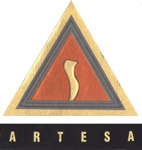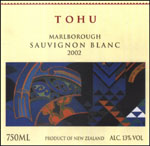![]()

Get
all the evaluations for
the JULY
Release
Subscribe
to Vintage Assessments today
by Clicking
Here
This
not-for-profit website is dedicated to the discerning reader!
From
the LCBO’s
Twilight Zone
to its Black Holes
Sauvignon Blanc from Artesa to Tohu!
National Post Weekly Wine & Spirits Columnist
Saturday, July 19, 2003
Launch
of Winefind.ca
The system is foolproof and easy. If there is a wine that interests you, just click on the name and you will instantaneously
connected with the LCBO database telling you if the wine is in the LCBO
system. If it is, it
will appear in blue and
all you have to do is click on the
name again and then the next screen will provide details on the wine
along with a store search. While the number of bottles in each store is
updated every night, you should call the store first to see if stock still
remains (each store phone number is also provided). It is that simple!
Note that all the items
recommended below are connected with the LCBO database – just click on
the name!
There are times that I feel like a magician, making
the invisible visible. I naturally have to credit the LCBO, whose policies
often hide great items from public scrutiny. Without them, my act of
pulling unheard of wines from a seemingly empty hat wouldn’t be
possible.
A case in point is the Vintages “In Store
Discovery” programme (referred to as ISD), which was launched in May
2001. Not only did the liquor board not publicize these items, but also
unlike the wines that come out in the well-publicized Vintages monthly
releases, they never let anyone, including their own consultants taste
them.
Vintages incorrectly believed that they could lure
customers to their stores with these “surprise” wines. The real
surprise, at least for the LCBO, is that the crowds never materialized.
Indeed, it was so bad that you could almost hear a wine agent’s teeth
gnash if one of their products happened to slip into what many called the
“LCBO twilight zone.”
From day one, I have provided readers with the full
monthly list of all ISD items on my website (see below), where you can
also find the full detailed list of all 410 items appearing over the past
32 months. To see the full list (click
here).
Finally there has been some progress. First, the LCBO
finally decided to publicize the products on the ISD hostage list. In
addition, it has miraculously managed to present for the very first time,
a few (unfortunately very few) wines from August’s ISD release.
Fortunately, some energized agents have finally
started asking me to preview their ISD releases. The reason has more to do
with tumbling licensee sales as a consequence of SARS, meaning that they
desperately need consumer exposure. Consequently, as your dedicated
taster, I am presenting my first ISD recommendation.
 I
have to admit that I get a bit antsy when shelling out big bucks for a
California white - so many of them are overpriced. So when I first fondled
this $39.95 bottle of Sauvignon Blanc, I had my reservations. One sniff of
Artesa
2000 Sauvignon Blanc Reserve (938373),
however, convinced me that at last I had finally found a Napa Valley gem
actually worthy of the price.
I
have to admit that I get a bit antsy when shelling out big bucks for a
California white - so many of them are overpriced. So when I first fondled
this $39.95 bottle of Sauvignon Blanc, I had my reservations. One sniff of
Artesa
2000 Sauvignon Blanc Reserve (938373),
however, convinced me that at last I had finally found a Napa Valley gem
actually worthy of the price.
The lush fresh peach and spicy buttered toast nose
seduced - a bouquet that would captivate any Chardonnay fan and yet has
that lifted tinge of Sauvignon grassiness that sets it apart. On the
palate, it is well textured and mouthfilling (14.2% alcohol) with fairly
intense, peachy-Anjou pear flavours that go on and on. A white with
character and yet is harmonious and refreshing.
Artesa winemaker Don Van Staaveren, who had spent two
decades at Chateau St Jean, has done a superlative job. In order to give
it the velvety texture and touch of toast, it was barrel fermented (95%
French oak) and aged sur lie for
16 months. To keep it crisp, no malolactic fermentation was permitted.
Artesa was created in 1999 from the existing $30
million hilltop Codorniu Napa winery. The 450-year-old, family-owned,
Spanish house of Codorniu constructed the latter as a shrine to méthode
champenoise in 1991. Unfortunately, US sparkling sales have been flat. So
a three-year, $10+ million facelift has brought it new life - artisan
winemaking focusing on small lots from numerous appellations. My only
complaint relates to LCBO pricing - it can be readily purchased for under
$17US. It also doesn’t help when the LCBO website tells us that this
reasonably dry white has a 2 sugar code, making it the same as many
off-dry German Rieslings!
Vintages’
Black Holes
Moving closer to oblivion, we have the LCBO’s
“black holes.” These are the Vintages “Soft” releases, which
manage to even leave yours truly totally in the dark. “Soft” because
there is no hard record of their release. Look at the LCBO website and you
will see that their release date is “not available.” They are truly
invisible, and unlike the ISDs, they can take place any time.
 One
wine, which unfortunately fell into the abyss, is the bracingly crisp New
Zealand Tohu
2002 Sauvignon Blanc (723221), which at $22.95 is a
style you’ll either love or hate. The nose has two elements -
wildflowers and honey on one side and gooseberries and fresh cut grass on
the other. There is a tightness here that carries over on to the palate,
which is quite rich, very tangy and dry with fairly intense, oak-free,
lemon grass flavours that almost jump out of the glass. There is some
white pepper on the finish, prompting one taster to complain that it made
his tongue itch. And yet this Marlborough white was great with sizzling,
tempura shrimps.
One
wine, which unfortunately fell into the abyss, is the bracingly crisp New
Zealand Tohu
2002 Sauvignon Blanc (723221), which at $22.95 is a
style you’ll either love or hate. The nose has two elements -
wildflowers and honey on one side and gooseberries and fresh cut grass on
the other. There is a tightness here that carries over on to the palate,
which is quite rich, very tangy and dry with fairly intense, oak-free,
lemon grass flavours that almost jump out of the glass. There is some
white pepper on the finish, prompting one taster to complain that it made
his tongue itch. And yet this Marlborough white was great with sizzling,
tempura shrimps.
When the LCBO doubled its very first order of Tohu
Sauvignon Blanc to 500 cases, the agent was ecstatic. This joy was short
lived when the wine emerged as a soft release. One obviously has to wonder
how a totally new unknown brand with a zero track record can be thrown
into the market without a stitch of visibility. “Unfair” would be an
understatement.
Fortunately, I met Tohu’s director, James Wheeler
at the crowded New Zealand wine fair held in Toronto recently. He
explained that Tohu is owned by the Wakatu Incorporation, which was
established in 1977 to rectify the government’s 137-year
misadministration of some 1400 ha of Maori reserve lands. Ending the
Crown’s usurious perpetual leases meant that all 1,668 Maori owners are
now eligible to receive dividends. Fortunately, 2002 was good - Tohu
recorded its first profit and production jumped from 6,000 to 28,000
cases.
As the fair’s noise grew, Wheeler’s enthusiasm
became evident. “Here were have stainless-steel-only – not a scrap of
oak has touched it,” he shouted. The alcohol is a respectable 13%,
whereas total acidity weighs in at 7.5 g/l
(much higher than Artesa respectable 6.3 g/l). While I was told
that it is going to sell for $19.95, the LCBO priced it at $22.95. Once
again the LCBO website incorrectly says that it has a sugar
code of 1 (or 10 g/l - it’s actually an extremely dry 4.5g/l) along with
the incorrect alcohol level of 12.1%.
Stylistically, as expressions of Sauvignon Blanc,
Tohu is the absolute antithesis of the Artesa. Nevetheless, these two New
World have two things in common - they both have been obscured and
overpriced by Vintages. Hopefully, they have now have received the
attention they deserve.
Check
out our new winefind.ca
Tasting Notes Data Base
Our tasting note database goes back to January 1, 2001 and covers every Vintages release product for the past 30 months. There are approximately 5,000 notes in the database data. Just enter the name of the product, supplier name or CSPC number. Nothing could be easier. You can even search by agent using our agent id number. There is nothing like it! When you get your search results (starting with the most recent release), click on the item name and you will instantaneously connected to the FBTI Vintage Assessments database. You will see the tasting note along with the name of the agent. You can immediately get information on the agent by clicking on the agent name. Also, you can check LCBO store inventory by clicking on Check LCBO Availability. It will automatically take you to the item you want to search.
To
use our winefind.ca Tasting Notes: click
here
Subscribe
to Vintage Assessments Today
• Click
Here
Vintages August 2003 Release
To see the complete list of upcoming products click
here
You can also see it sorted by
agent
click
here
Copyright Food & Beverage Testing Institute of Canada
2004
Prior written permission is required for any form of reproduction
(electronic or other wise) and or quotation.
Contact Michael Vaughan at
mbv@total.net